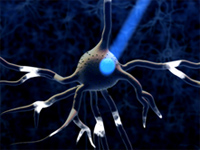An increasingly powerful approach for studying brain circuits relies on targeting
genetically encoded sensors and effectors to specific cell types. However, current
approaches for this are still limited in functionality and specificity. Here we
utilize several intersectional strategies to generate multiple transgenic mouse
lines expressing high levels of novel genetic tools with high specificity. We
developed driver and double reporter mouse lines and viral vectors using the Cre/Flp
and Cre/Dre double recombinase systems and established a new, retargetable genomic
locus, TIGRE, which allowed the generation of a large set of Cre/tTA-dependent
reporter lines expressing fluorescent proteins, genetically encoded calcium,
voltage, or glutamate indicators, and optogenetic effectors, all at substantially
higher levels than before. High functionality was shown in example mouse lines for
GCaMP6, YCX2.60, VSFP Butterfly 1.2, and Jaws. These novel transgenic lines greatly
expand the ability to monitor and manipulate neuronal activities with increased
specificity.
